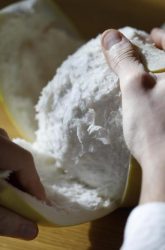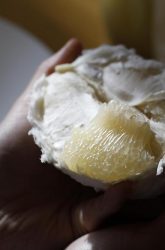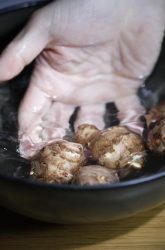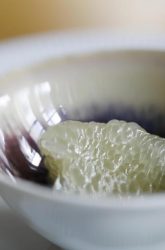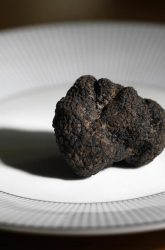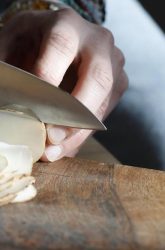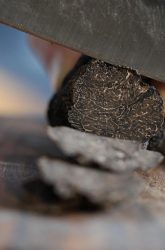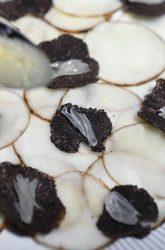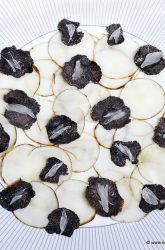Rich and Poor is
the third column from the series DISH!
–
Gastronomical economics are a funny thing. It’s not so long ago that oysters were the last resort for poor peasants, who harvested them freely from the sea during difficult times. A spoonful of sugar for your coffee would have cost a fortune, just a couple of hundred years ago. Not that you or I would have been able to afford coffee, for that matter. Rarity is certainly a factor, but mainly it’s that strange dance between supply and demand, its dynamics swaying with the rhythm of the seasons and cascading as one travels from one region to the next.
The absurdity of this is nowhere quite as evident as in the contrast between the prices of tubers; foodstuff that grows in dirt, frequently with little or no assistance from a human hand. As a fan of the absurd, bringing this juxtaposition on the plate is, at the very least, a fun exercise.
The protagonists on the stage, that should be a glimmering white plate with minimal decoration, are Jerusalem artichokes and white truffles. One is a root, the other a mushroom, but both are tubers, even if by linguistic sleight-of-hand. The former, the underground part of a sunflower in the thistle family, can be roasted like a potato, puréed as soup or sauce, but its texture and freshness are at their best when eaten raw. That washing up is thus minimised is a welcome bonus.
Its mushroom partner in this story is a famous Piemontese beauty, the white truffle of the Alba Madonna. Their apparent physical similarities (they’re both small, white, slightly stubby) play well into our game. Treat them in the same way and they become equal players, even if your wallet knows otherwise.
Today, we’ll do a carpaccio with them. For each portion as an appetizer, you will need a medium sized, firm artichoke and as much of the truffle as you can indulge in. Wash the artichoke well, but do not peel it. Using a mandolin or deft knife skills, slice it as fine as you can manage and quickly toss in some pomelo juice to prevent it from oxidizing and discolouring. Arrange the slices on your plate, sprinkle a little flaked salt and slice the truffle over it. Drizzle with the finest olive oil you have at home (a fruity one works well here) and scatter some jeweled pomelo vesicles.
Alternatively, if white truffles prove hard to find, go for the black variety as shown in the photos, or you can compose the same dish with the artichoke slices and a dressing of pomelo juice and white truffle oil, with some shavings of aged parmesan arranged over the artichoke carpaccio.
TEXT TASSOS SARAMPALIS | PHOTOGRAPHY SANDER MARTENS
DISH is the brainchild of two friends, Sander Martens and Tassos Sarampalis. Though they come from very different parts of the world, they are both inspired by food; Sander as a photographer and Tassos as food writer. Together, they explore the taste and nature of food, visually, culturally, and artistically, influenced by their international and local experiences. The column is published every two months in Villa d’Arte (Kookkunst).
© Sander Martens & Tassos Sarampalis, all rights reserved

